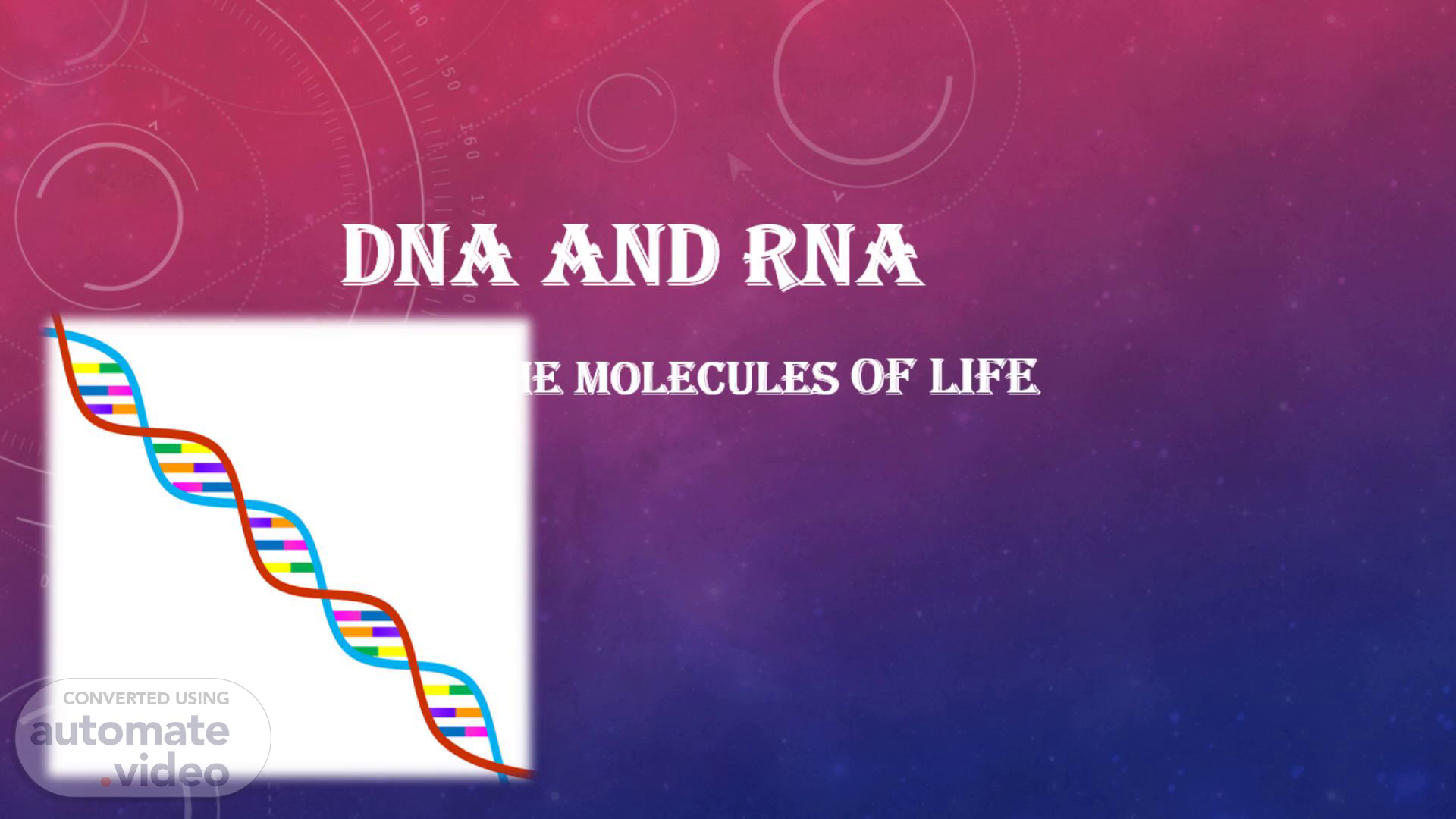Scene 1 (0s)
Dna and rna the molecules of life. Name : t . Keerthi Reg no : ra2511003020392 Dept & sec : cse - g year : 1 st.
Scene 2 (10s)
INTRODUCTION. DNA and RNA are nucleic acids. They store and transmit genetic information. Found in all living organisms. What are Nucleic Acids? DNA and RNA are nucleic acids. Made of long chains of nucleotides. Found in the nucleus and cytoplasm of cells..
Scene 3 (25s)
DISCOVERY OF DNA. Discovered by Friedrich Miescher (1869). Structure explained by Watson and Crick (1953). Rosalind Franklin’s X-ray work helped reveal the double helix. Structure of DNA Double helix shape Made of nucleotides: sugar, phosphate, and base Bases: Adenine (A), Thymine (T), Cytosine (C), Guanine (G).
Scene 4 (42s)
Structure of RNA. Single-stranded molecule Sugar: Ribose Bases: Adenine (A), Uracil (U), Cytosine (C), Guanine (G) Types of RNA mRNA – Messenger RNA tRNA – Transfer RNA rRNA – Ribosomal RNA.
Scene 5 (54s)
COMPARISION BETWEEN DNA AND RNA. DNA. Double stranded helix. Deoxy ribose sugar. A,T,C,G are bases. Present in nucleus. It stores genetic information..
Scene 6 (1m 13s)
Dna replication. DNA makes an exact copy of itself. Important during cell division. Enzyme involved: DNA polymerase. RNA from DNA Transcription – Making DNA → RNA Occurs in the nucleus. Enzyme: RNA polymerase..
Scene 7 (1m 28s)
Translation – Making Proteins from RNA. RNA → Protein Occurs in ribosomes. Uses codons to determine amino acid sequence. Role in Heredity DNA passes traits from parents to offspring. Mutations can cause variation..
Scene 8 (1m 42s)
Importance in Biotechnology. DNA fingerprinting Gene therapy RNA vaccines Genetic engineering I Interesting Facts The human DNA has about 3 billion base pairs. If stretched, DNA from one cell would be about 2 meters long! RNA molecules act as messengers, enzymes, and regulators..
